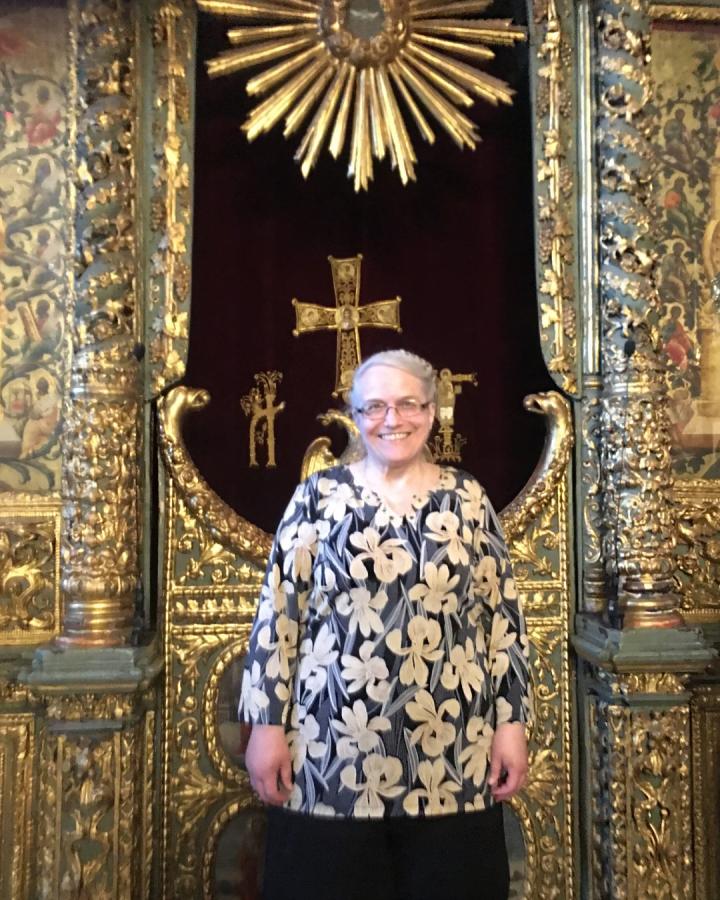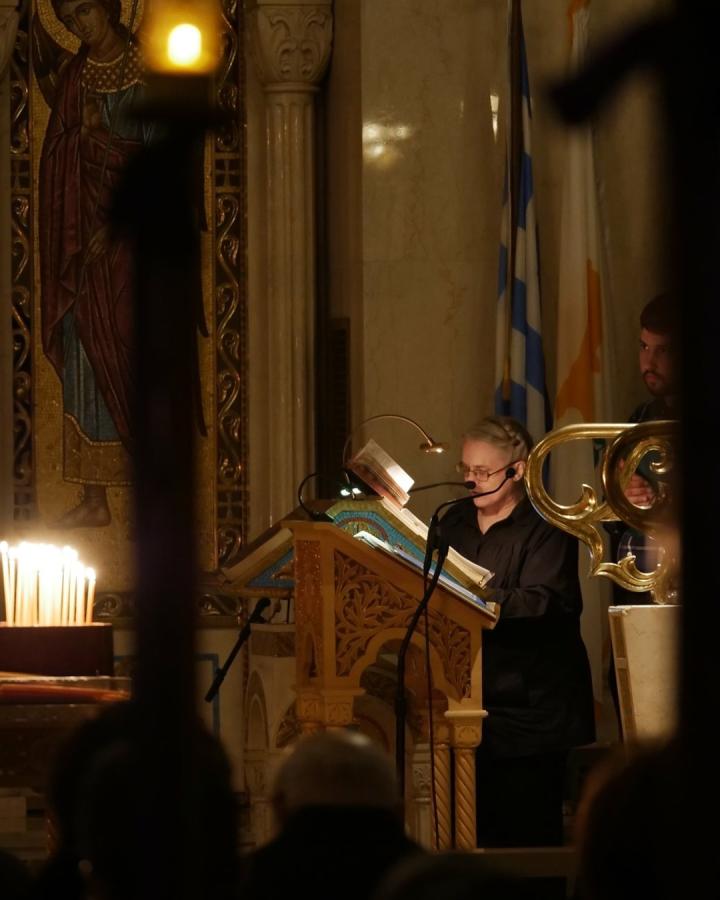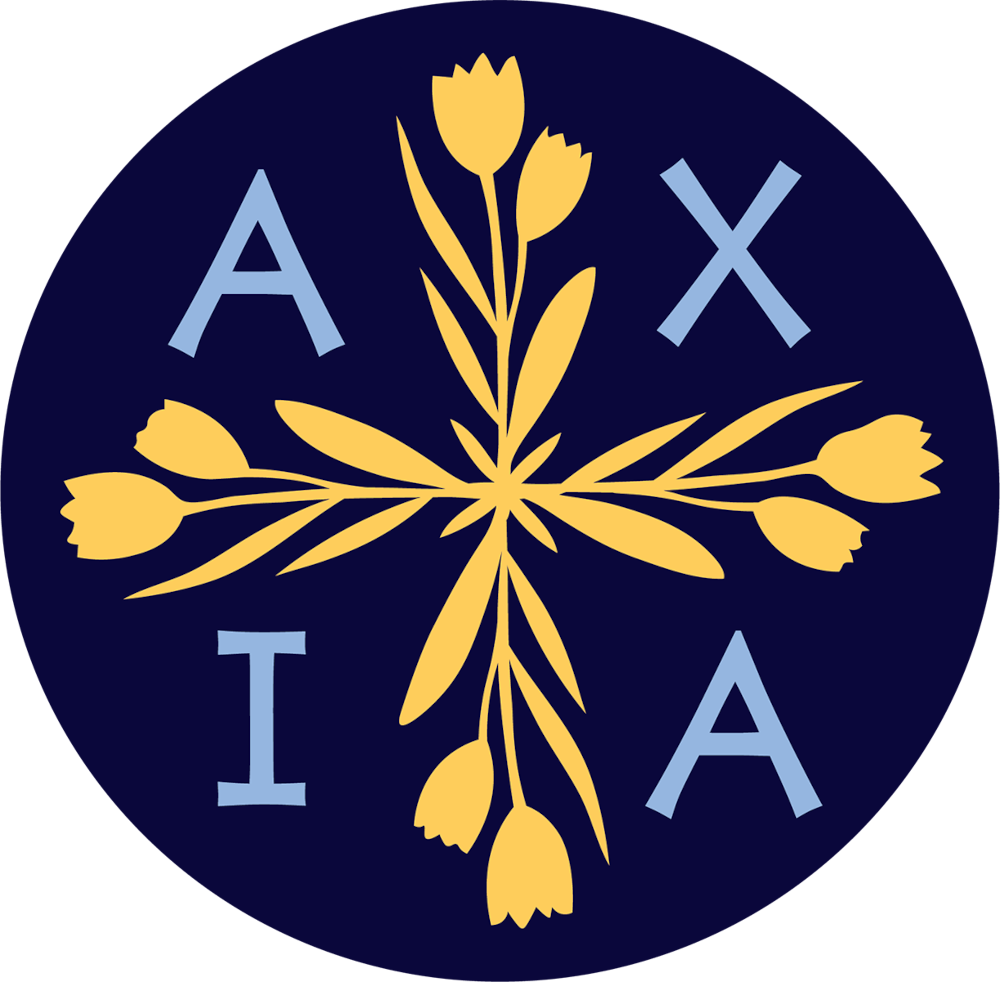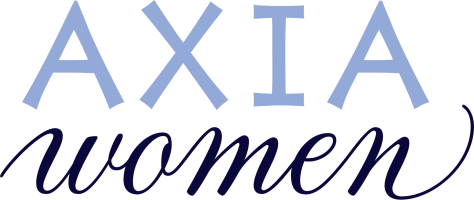
Dawn Helene was a Woman of the Week in December 2021, nominated for her role as the Dino Anagnost Artist-in-Residence at the Greek Orthodox Archdiocesan Cathedral of the Holy Trinity in New York City, the national Cathedral of the GOAA. Dawn was (and still is!) responsible for arranging an ever-growing body of work for the choir in English and Greek, many of which are heard during the weekly Divine Liturgy.
Although she became Orthodox later in life, she became proficient in the Byzantine tones in a relatively short time, and is immensely respected for her talents and service to the Church. We sat down with Dawn recently to hear more about what she has been working on since 2021, including a setting of the Divine Liturgy:
“At the annual meeting of our regional choir conference in November of 2022 (Archdiocesan District Federation of Greek Orthodox Church Musicians), the director at the cathedral announced to the assembled people that at the next conference we were going to sing the liturgy by Dawn Helene. It was news to me that day.
“That gave me a whole year to put it together. There were things that I had already written that ended up being in it, but the bulk of the work obviously was ahead of me. So I had a very disciplined year of work, including some composition on a daily basis so that there wasn't any deadline panic at the end. It was a really, really gratifying experience, and having oriented my entire life around the project, after it was over, it was a little disorienting.
“The first step for me in writing the liturgy was to select the melodies that would be used for each hymn. In our tradition there's a preference for Greek Byzantine melodies, and sourcing those is the first step. Once I had the melody, I transcribed it from Byzantine neumes into Western notation, and then harmonized it so that it would have four parts (soprano, alto, tenor, and bass).
“After transcribing the melody, I had to have my chant teacher check it to make sure that it was accurate and that it contained appropriate ornamentation, and then when that was done I could start actually adding the other parts to it. I didn’t anticipate how much time it would take to get what I had written with paper and pencil into a notation software so that other people could read it. It was laborious but necessary.
“Part of the melody-selection process requires decisions about modes. We have eight modes, and there are parts of the liturgy that tend to rotate through the eight modes, and then there are other parts where it's pretty traditional to keep it in second mode all the time. As a new person doing this and as a convert, I wanted to color within the lines as much as possible because I'm not an insider trying to expand the horizons, I’m an outsider (or maybe more accurately a newbie) trying to gain acceptance. Because of this, I was very conservative about staying within the traditions of what typically happens at the cathedral on a Sunday.
“I kept the second mode in all the traditional places at the beginning and end of the liturgy, but in the middle, where it’s traditional to vary the mode week to week, I chose to use first mode. I did the Trisagion in both first and second mode, because I love the first mode melody, but if a hierarch is present we would need the second mode available. All of the parts where the second mode isn't necessary, I did in the first mode. And it is my plan to ultimately do first-mode versions of all the hymns, so people have a choice..
“The harmonizing is my contribution to the final product. For example, the Cherubic Hymn that I used is maybe the most famous first-mode Cherubic Hymn in existence. I took that and transcribed it, left some of it in chant, and then as it progresses, each new section of the text gets a fuller texture until finally we’re fully in four parts.
“I started all the sourcing and the transcribing in November, and by March I had enough done that I could get it out to people so they could start rehearsing. By August I had everything done, which doesn't mean there wasn't some tweaking after that, but everybody who was going to attend the conference had access to the score if they wanted to prepare their parts before the conference. If they had questions I could answer them, so that come the November conference, we had people who were actually ready to sing it. We did record the premier performance at the conference at Panaghia of Island Park, out on Long Island. (https://www.youtube.com/live/LRDwz49Zm8A)
“Now I'm just working on little projects here and there. I've joined a couple of committees for the National Forum of Greek Orthodox Church Musicians. The Liturgical Music Committee does a symposium at the Forum's annual meeting in the summer every other year. Someone once asked, “Why do we go to this annual meeting and we don't sing? I want to know what other people are doing!” So we put out a call to all the composers to submit pieces for that symposium, and we read through them. The other effort I’m involved in is the St Romanos Church Music Festival, which is an opportunity for the youth of the church (grade 7-12) to learn the major hymns of the church and perform for their peers and communities. We need to make sure that our young people are prepared to take our places when it’s their turn to lead the church in song.
“I was asked to write a Doxology for the Greek Orthodox Archdiocese's Centennial Celebration, which was also sung at the conference in November, so that recording is part of the liturgy linked above as well. One of the things the National Forum is trying to encourage is cooperation between the chanting community and the choral community, which has not always been 100% smooth, and so the Doxology that I wrote was designed for a collaboration between what I affectionately call the “men in black,” the Archdiocesan Byzantine Choir, and the the National Forum’s Centennial Choir. We alternated verses just as you would do at the chant stand, and it was very well received. This year I'm going to send my Simeron Kremate (one of the hymns for Holy Thursday evening) for the summer symposium, and that can be used in the same way - the verses can be alternated between a chanter and a choir, or the choir can do the whole thing, as we have done in a couple of our Lenten concerts. I'm finding that the process of editing scores is never-ending. I'm on the computer every weekend cleaning up one score or another, while trying to generate new material as well.
“I’ve also done translations of the Resurrectional Apolytikia, and have arranged all eight of those for choir. I want to find things that are both easy to grasp at a first hearing, and also a little bit challenging. For example, the second mode apolytikion refers to Hades being “put to death by the lightning of your divinity.” Well, if Hades was struck by lightning, then “struck dead by the lightning of your divinity” is what I want to say, to make the English as evocative as possible. There are lots of opportunities like this, where a single word choice can make a connection in the target language but may not survive if the translator is not looking for it.
“Let me just end by saying that it is the honor of my life to serve the church in this small way. There’s so much incredibly beautiful choral music in the Orthodox Church; to have an opportunity to make a contribution to that body of work is a privilege and an awesome responsibility.”
Thank you, Dawn!



